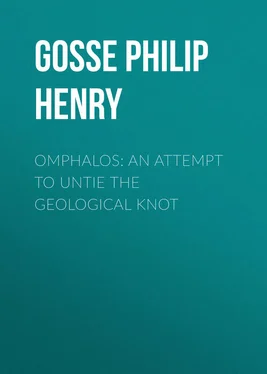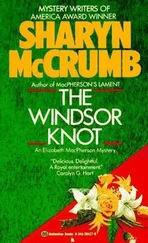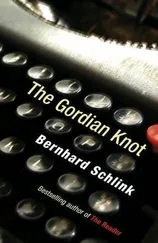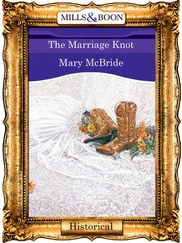Philip Gosse - Omphalos - An Attempt to Untie the Geological Knot
Здесь есть возможность читать онлайн «Philip Gosse - Omphalos - An Attempt to Untie the Geological Knot» — ознакомительный отрывок электронной книги совершенно бесплатно, а после прочтения отрывка купить полную версию. В некоторых случаях можно слушать аудио, скачать через торрент в формате fb2 и присутствует краткое содержание. Жанр: Биология, foreign_antique, foreign_prose, на английском языке. Описание произведения, (предисловие) а так же отзывы посетителей доступны на портале библиотеки ЛибКат.
- Название:Omphalos: An Attempt to Untie the Geological Knot
- Автор:
- Жанр:
- Год:неизвестен
- ISBN:нет данных
- Рейтинг книги:3 / 5. Голосов: 1
-
Избранное:Добавить в избранное
- Отзывы:
-
Ваша оценка:
- 60
- 1
- 2
- 3
- 4
- 5
Omphalos: An Attempt to Untie the Geological Knot: краткое содержание, описание и аннотация
Предлагаем к чтению аннотацию, описание, краткое содержание или предисловие (зависит от того, что написал сам автор книги «Omphalos: An Attempt to Untie the Geological Knot»). Если вы не нашли необходимую информацию о книге — напишите в комментариях, мы постараемся отыскать её.
Omphalos: An Attempt to Untie the Geological Knot — читать онлайн ознакомительный отрывок
Ниже представлен текст книги, разбитый по страницам. Система сохранения места последней прочитанной страницы, позволяет с удобством читать онлайн бесплатно книгу «Omphalos: An Attempt to Untie the Geological Knot», без необходимости каждый раз заново искать на чём Вы остановились. Поставьте закладку, и сможете в любой момент перейти на страницу, на которой закончили чтение.
Интервал:
Закладка:
If the Triassic formations display but little evidence of organic existence, the lack is supplied by the abundance of such records, which is contained in the Oolitic system, and specially in its lowest component, – the Lias. Animals now existed in profusion, but of species which were for the most part peculiar. The coral-making Polypes existed not (or very rarely) in the seas of that age, but lime was secreted by an unusual number of Crinoid Echinoderms, which seem to have fringed the rocks and floating pieces of timber, much as Barnacles do now.
Among the Mollusca now began to appear the inhabitants of those very elegant shells, the Ammonites , allied to the Nautilus of our Southern seas, which may be considered as the lingering representative of those swarms of shelled Cephalopoda. They were accompanied by their near relations, the Belemnites , more resembling a Cuttle, with a long internal, pointed shell.
Fishes, chiefly belonging to a curiously armed tribe of Sharks, together with some enclosed in bony-mail like pavement, were present in the shallows, where the Lias was probably deposited.
But the most characteristic animals were great marine Reptiles, of strange and uncouth forms, to which the present world presents us no known analogy. One of these was the Ichthyosaurus , which closely resembled a porpoise in form, but thirty or forty feet in length, with a vertical fish-like tail, and two pairs of paddles; a mouth set with stout crocodilian teeth, and enormous eyes. Another form was that of the Plesiosaurus , scarcely less in size than its fellow, which in the outline of its body it resembled: it was distinguished, however, by an extraordinary length of neck, slender and swan-like, consisting of thirty or forty vertebræ.
It adds to the interest of these great marine Reptiles, that around their fossil skeletons are preserved pellets of excrement (known as Coprolites) containing fragments of bone, teeth, and scales of fishes, which clearly reveal the nature of their food. In some instances, the stomach and intestines of these great carnivorous creatures, filled with half-digested food, have left indubitable traces of their presence in situ .
Again, the geography of the Globe changed. New lands arose from the sea, and old lands partially or wholly sank. The German Ocean, and part of Western Europe, of our maps, were a great group of islands. The Oolitic formation was deposited. The general character of the organization of this period differed little from that of the Lias. New forms of plants, such as Cycadeæ , were abundant, with, considerable numbers of Corals, Encrinites, Sea-urchins and Mollusks. Macrurous Crustacea, much like those of our times (but essentially different in species), inhabited the sea, and some Beetles and Flies represented the Insects of the land. The Fishes and Marine Reptiles were pretty much the same with those of the Lias, though they received some important additions.
It is, however, among the terrestrial Vertebrata that we must look for the characteristic organisms of this age. And these are, still, Reptiles. The huge Megalosaurus , with a body as big as an elephant's, stood high on his legs, and stretched open a pair of gaping jaws, set with jagged teeth. The Pterodactyles flew about, – carnivorous lizards, with the body and wings of bats, 33 33 Mr. Newman suggests that they were "marsupial bats" (Zoologist, p. 129). I have adopted his attitudes, but have not ventured to give them mammalian ears.
except that the membrane was stretched upon the enormously developed little finger; – creatures, perhaps, the most unlike to anything familiar to us, of all fossil forms. And, in the marshy margins of the great river valley which formed the Wealden of our South-eastern districts, the giant Iguanodon , and his fellow, the Hylæosaurus , waged their peaceful warfare on the succulent plants that became their unresisting prey.
The circle of animal life was completed in this epoch, thus far, that every class was represented by some one or more of its constituent species. No fossil skeletons of Birds have, indeed, been found so low as the Oolite, but numerous foot-prints of some of the Grallatores are found in a sandstone of this period; and in the Stonesfield slate, which is contemporary with it, a genus of Mammalia has been discovered, – a small Marsupial, allied to the Opossums of America.
The duration of the Oolitic period must have been considerable. "The lias sea-bottom was succeeded first by a sandy, and then by a calcareous deposit, and the animals were modified accordingly." The deposit of carbonate of lime, which took place under circumstances that caused it to attract around its nodules the organic particles, whence the name oolite (egg-stone) is derived, was not continuous, but repeated at intervals. The shells of Mollusks were developed in great abundance, and accumulations of these formed thick bands, which consolidated into layers of shell-limestone. Three hundred feet of strata, largely composed of organic remains, were formed before the clay was deposited which made the Stonesfield and contemporaneous slates.
Once more the dry land sank, probably by slow successive subsidences, and the sea flowed many fathoms deep above the great European archipelago. And upon its quiet bottom settled down, first a few sandy and clayey beds, and then the great layer of the Chalk.
Creatures of very minute size and low grades of organization were now playing a very important part. A large portion of the lime that was deposited, in the form of a pure carbonate, was doubtless supplied by the Coral structures, which, were exceedingly numerous; the polypidoms being gnawed down by strong-jawed fishes that fed upon the Zoophytes. Foraminifera also were abundant, and contributed to the supply.
Nodules of flint exist in the Chalk, sometimes scattered, sometimes arranged in bands. Two sources are indicated for this substance. One is Sponge, the most common kinds of which are composed of skeletons of siliceous spicula; and these can be discerned with the microscope in the interior of the chalk-flints. But millions upon millions of Infusoria swam through the waters, and many of these were encased in siliceous loricæ, while the rocks and sea-weeds were fringed with as incalculably numerous examples of siliceous Diatomaceæ , whose elegant forms are recognisable without difficulty throughout the Chalk. The inconceivable abundance of these forms may be illustrated by the often-cited fact, that whole strata of solid rock appear to be so exclusively composed of their solid remains, that a cube of one-tenth of an inch is computed by Ehrenberg to contain five hundred millions of individuals.
The increase of these organisms is very rapid, and their duration proportionately short; but allowing for this, what period would elapse before the successive generations of entities, of which forty-one thousand millions are required to make a cubic inch, would have accumulated into solid strata fourteen feet in thickness?
Without pausing to examine the whole Cretaceous fauna, we may observe that the Mollusca with chambered shells – the Ammonites and their allies – were developed in singular variety and profusion during this period, after which they suddenly disappeared from the ocean. The Fishes present little that is remarkable; of Birds, few, and of Mammals, no remains exist; and the Reptiles, while not absolutely extinct, are few and rare. One great marine form, however, the Mosasaurus , was added to their number.
At length the sea ceased to deposit chalk, and its bed appears to have been slowly elevated, until all the animals that had inhabited the waters of that formation were destroyed; so that their race and generation perished. 34 34 In Tennant's "List of Brit. Fossils" (1847), but two species – a Brachiopod and a Gastropod – are mentioned as common to the Chalk and the London Clay. They are Terebratula striatula , and Pyrula Smithii .
The grand epoch of Secondary Formations was closed.
Интервал:
Закладка:
Похожие книги на «Omphalos: An Attempt to Untie the Geological Knot»
Представляем Вашему вниманию похожие книги на «Omphalos: An Attempt to Untie the Geological Knot» списком для выбора. Мы отобрали схожую по названию и смыслу литературу в надежде предоставить читателям больше вариантов отыскать новые, интересные, ещё непрочитанные произведения.
Обсуждение, отзывы о книге «Omphalos: An Attempt to Untie the Geological Knot» и просто собственные мнения читателей. Оставьте ваши комментарии, напишите, что Вы думаете о произведении, его смысле или главных героях. Укажите что конкретно понравилось, а что нет, и почему Вы так считаете.












